The number of physicians e-prescribing has more than doubled in the past year to about 12% of all office-based doctors. Between Medicare bonuses and assorted software and hardware incentives from other carriers, physicians are beginning to ease up on the use of pen and paper.
Medical malpractice provider The Doctor’s Company publishes a list of telemedicine best practices aimed at enhancing care and decreasing liability exposure. Some of the better advice includes providing patients with examples of the types of complaints that are adequately dealt with over the phone or e-mail vs. a visit to the ED. A few of the pointers make good sense for anyone e-mailing: don’t put in an e-mail something you wouldn’t say; be concise and check for spelling and grammar errors; and pick up the phone if the communication is taking more than 2-3 e-mails to explain.

Clara Maass Medical Center (NJ) provides new tools for its physicians to send and receive EMR data, selecting Axolotl to provide technology and services for its HIE. Clinicians will electronically receive clinical information via their existing EMR, Axolotl’s EMR Lite, or fax. Axolotl’s Elysium Virtual Health Record (VHR) will also compile information from disparate EMRs to provide a comprehensive view of the patient’s medical history.
Commonwealth Fund President Karen Davis calls for modernizing the country’s health information technology. "Medicare can do its share by joining with private payers in contributing funds to help those who cannot afford to purchase such technology on their own — especially safety-net clinics and hospitals serving uninsured and low-income patients. It can also create incentives for the adoption of information systems meeting approved standards, and help establish ‘health information networks’ that allow patients and the health professionals that care for them to have all relevant medical information available at their fingertips. While such a change requires upfront investment, it would begin to pay dividends after seven years and generate net savings of $88 billion over a decade."

Adena Health System (OH) rolls out a new e-prescribing initiative. The health system is sponsoring a pilot program and plans to implement the service system-wide by the middle of the year. Adena is using Pharmacy Health Information Exchange, which is operated by SureScripts.
Odd lawsuit: a retired Alabama doctor who collected $1 million from his lawsuit claiming a cemetery encroached on his 16-plot "estate lot" has the award reversed. He claimed the loss of a few square feet caused him mental anguish, although he admitted that he had not sought psychological treatment.
HIMSS, a founder of CCHIT, brags on adoption of CCHIT-certifed EMRs, coming to the oddly phrased conclusion that the market vastly prefers certified products (instead of the obvious, that pressure has cause the usual vendors to get their products certified and sales haven’t really changed). HIMSS thinks certification makes products easier to evaluate and less risky, but certified product vendors have gone out of business, sold doctors products that are completely unsuitable to their work flow, and sold products that are theoretically interoperable but definitely not interoperating. Plus, nearly every major product is certified, so certification still doesn’t provide a tie-breaker.
A survey finds that most physicians made more money in 2008 than the previous year, despite a weak economy. Specialists achieved a 4.4% salary gain and primary care doctors saw 4% raises. Seventy-two percent of the 257 healthcare organizations surveyed reported increases in physician salaries, compared to 73% in 2007. Only ten percent of the doctors saw decline in salaries. The survey also found an increase in the use of incentive plans tied to quality measures and a decrease in plans paid per work RVUs.
In his inaugural speech, Obama promotes healthcare technology to "raise health care’s quality and lower its cost."

Crain’s New York Business/Health Pulse reports that New York University Medical Center has chosen Epic for a massive clinical systems project that includes its ambulatory sites and faculty practice office. The cost of the project was given as $186.4 million.
Revenue cycle and practice manager provider MTBC partners with healthcare collector Computer Credit to offer an ASP collection portal for healthcare practices and hospitals.
A couple of housekeeping details. We are pleased vendors have already booked our two Founding Sponsor slots, so expect to see their banners soon. A couple of Platinum spots have also been committed. Vendors interested in one of the remaining spots should contact Inga. If you haven’t signed up for e-mail updates, take a moment to do so by putting your e-mail address in the Get Instant Updates box to your upper right. We don’t want you to miss any updates or one of the many interviews lined up for the coming weeks. And thanks for reading and sending in your comments.
A former health department billing clerk is charged with computer fraud after allegedly using an illegally obtained credit card with a patient’s name to make a $400 Wal-Mart purchase. The sheriff’s department found a handwritten list of 14 patients with names and Social Security number in the clerk’s home. The health department has warned 11,000 patients to be on the lookout for fraud.

Who knew that there was a National Medical Group Practice Week? This is the sixth annual celebration of the MGMA-sponsored event, which is designed to promote awareness and understanding of medical group practice as the "premier form of healthcare delivery." Next year, we’ll be more on top of it and send out "Happy Group Practice Week" cards.
A West Virginia county suspends its smoking ban less than three weeks after it went into effect after bar owners complained it was hurting business.
E-mail Mr. HIStalk.
E-mail Inga.

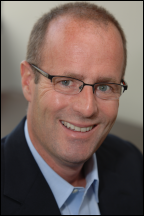





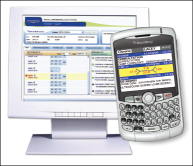
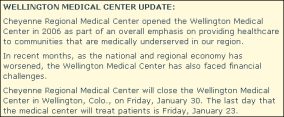
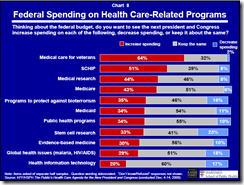

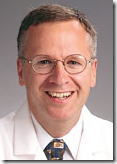
The article about Pediatric Associates in CA has a nugget with a potentially outsized impact: the implication that VFC vaccines…